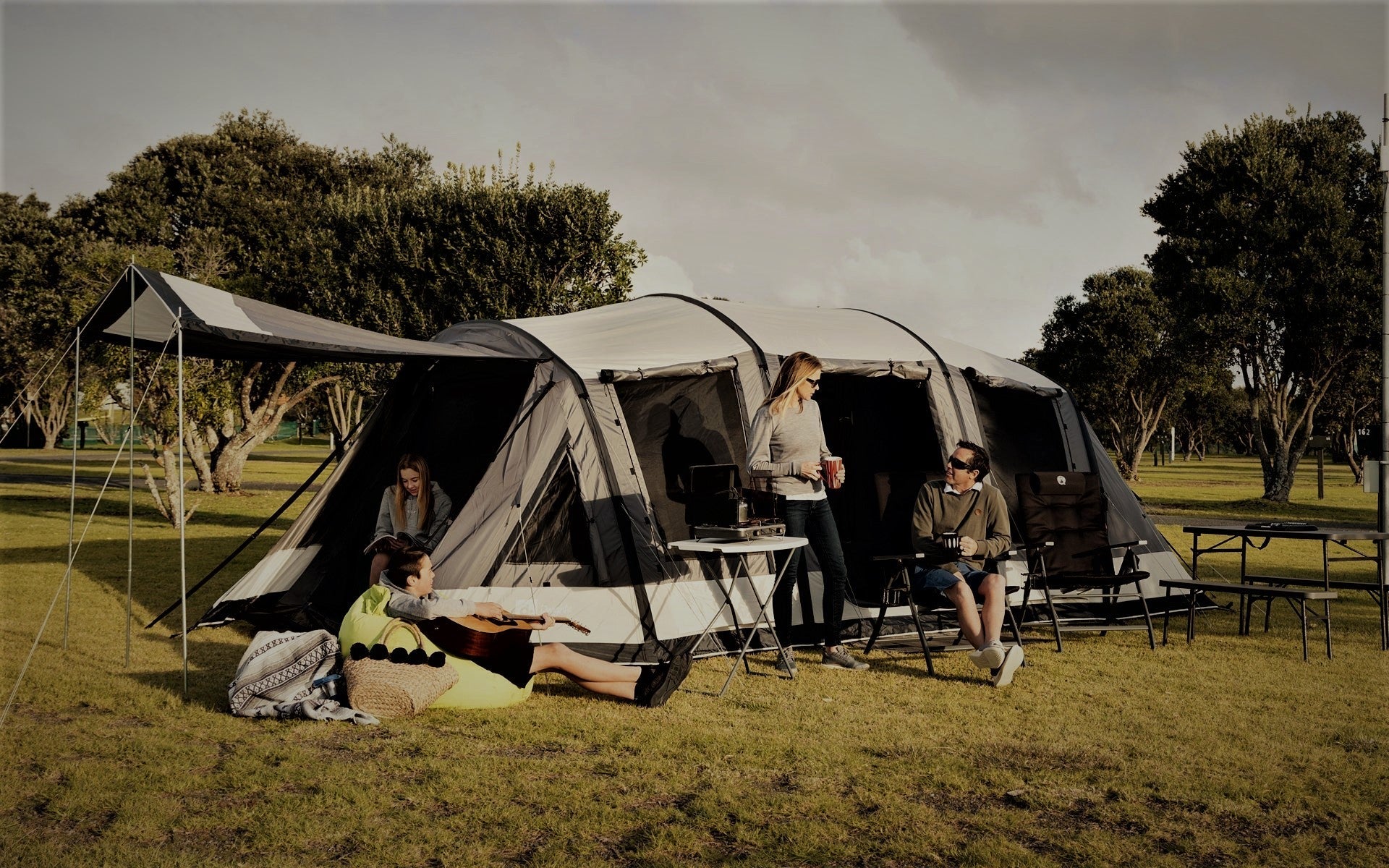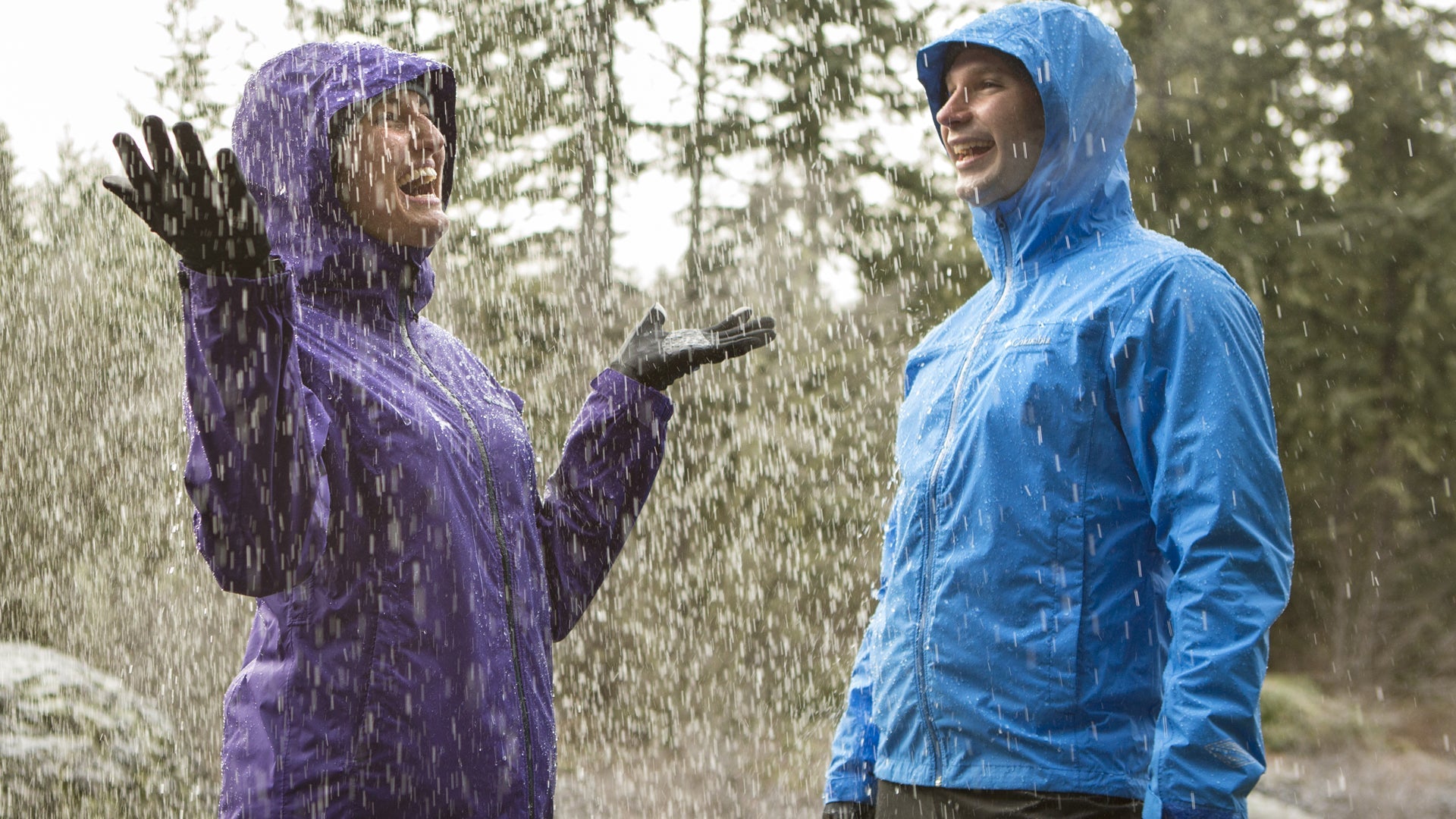What are the different types of tents?
What are the Different Types of Tents?
When it comes to camping and outdoor adventures, one of the most critical pieces of equipment you'll need is a reliable tent. Tents come in various shapes, sizes, and designs, each tailored to different camping needs.
In this article, we'll dive into the fascinating world of tents, exploring the various options available to campers and adventurers alike, including some of the most popular choices.
1. Dome Tent
A dome tent is a type of tent that is shaped like a dome or half-sphere. It is supported by flexible poles that cross over the top in an "X" or intersecting pattern, creating its curved, dome-like structure.
The dome design is popular for camping tents because it offers good wind resistance, sheds snow and rain effectively, and often provides a relatively spacious interior compared to its footprint.
The tent's curved surface allows for better stability in windy conditions and also provides decent headroom for occupants.
Dome tents can vary in size, from small, one-person tents to larger family tents. They are typically easy to set up and are favored by both beginner and experienced campers.
Pros:
-
Simple and quick setup.
-
Excellent stability and wind resistance.
-
Available in various sizes.
Cons:
-
Limited headroom due to the sloping walls.
-
Less spacious than some other types.
2. Canvas Tent
A canvas tent is a sturdy, easy-to-use portable shelter primarily made of cotton. For generations, various individuals, from campers to soldiers, have favored these tents.
What makes them unique is their ability to allow fresh air to circulate, ensuring a comfortable and dry interior.
They adapt well to changing weather conditions, providing warmth in the cold and staying cool in the heat.
Due to their durability and versatility, many people choose them for their camping trips and outdoor excursions.
Pros:
-
Breathability ensures reduced condensation.
-
Provides good insulation across varying weather conditions.
-
Durable and can last for years if maintained properly.
Cons:
-
Generally heavier than synthetic tents.
-
Requires proper maintenance to avoid mold and mildew.
-
Typically more expensive.
3. Ultralight Tent
An ultralight tent is lighter and more packable than traditional tents, designed specifically for backpackers and hikers who prioritize weight savings.
Made with innovative materials and minimalist designs, these tents allow adventurers to travel faster and further by reducing their overall pack weight.
While they offer essential shelter from the elements, ultralight tents often sacrifice some durability and space to achieve their weight-saving characteristics.
They're ideal for those who want to carry less and cover more ground, especially on long-distance trails or challenging terrains.
Pros:
-
They are extremely light, making them ideal for long-distance trekkers.
-
Compact design is space-saving in your backpack.
-
Faster setup due to simpler design.
Cons:
-
- It might not be as durable as heavier tents.
-
- Often provides minimal space and features.
-
- Might compromise on some comforts to achieve weight savings.
4. Multi-Room Tent
A multi-room tent is a type of camping tent designed with multiple divided sections or compartments within a single tent structure.
Multi-room tents are designed to provide separate living or sleeping spaces for campers, making them ideal for larger groups or families who want some level of privacy and organization during their camping trips.
Pros:
-
Offers privacy and organization.
-
Great for family camping.
Cons:
-
Bulkier and heavier.
-
Takes longer to set up.
5. Tunnel Tent
Tunnel tents are like giant tubes that are great for camping with your car nearby. They're longer, narrower, and lower than dome tents.
It is shaped like a tunnel, which means you get lots of space inside. These tents are awesome because they can fit many people and still have room for your stuff.
When you're camping in a tunnel tent, you can stretch out and have a good night's sleep. Plus, they're easy to set up, so you can enjoy your camping trip more and less time worrying about your shelter.
So, a tunnel tent is a cool choice if you're going car camping and need a big, comfy space to sleep and relax!
Pros:
-
Good aerodynamics and ample space.
-
Suitable for car camping.
Cons:
-
It may not withstand strong winds as well.
-
Setup can be more involved.
6. Pop-Up Tent
A pop-up tent is a type of portable shelter designed for quick and easy setup, typically used for camping or outdoor activities.
Unlike traditional tents that require assembling poles and stakes, a pop-up tent is designed to "pop up" or expand into its full shape without much effort.
These tents usually feature a flexible frame made of springy or collapsible materials, such as fiberglass or metal, allowing them to take shape when removed from their storage bag instantly.
Pop-up tents are designed for convenience and are often favored by campers who want a hassle-free, time-saving outdoor shelter solution.
Pros:
-
Quick and effortless setup.
-
Various styles and sizes are available.
Cons:
-
Limited durability compared to other types.
-
Less weather resistance.
7. Hammock Tent
A hammock tent is a type of outdoor shelter that combines a hammock's comfort with a tent's protection.
Hammock tents are designed for camping and outdoor enthusiasts who want to sleep off the ground in a suspended hammock-like bed while also having a protective cover overhead.
Pros:
-
Elevated sleeping to avoid uneven terrain.
-
Unique camping experience.
Cons:
-
Limited space and comfort for some.
-
Requires appropriate hanging spots.
8. Backpacking Tent
A backpacking tent is a tent that can be carried in a backpack. It is a specialized outdoor shelter meticulously designed for backpackers and hikers who require a lightweight, portable, and compact solution for their adventures.
This type of tent is specifically engineered to be small and lightweight enough to be packed into a backpack, making it highly portable and convenient for those who need to carry all their gear on their backs.
Backpacking tents are known for their ability to provide a comfortable and protected sleeping environment while remaining highly portable and easy to transport, essential for individuals exploring the great outdoors on foot.
Pros:
-
Ultra-lightweight and compact.
-
Ideal for hikers and backpackers.
Cons:
-
Limited space and features.
-
Less comfort for extended stays.
9. Hiking Tent
A hiking tent is designed to give shelter from the elements and to be carried easily during treks and expeditions.
These tents are built to be lightweight and compact, allowing hikers to pack them into their backpacks and transport them over long distances.
Typically durable and weather-resistant, hiking tents offer protection against rain, wind, and cold, ensuring a comfortable resting place after a day's journey.
Their design balances weight, space, and functionality, making them a favorite choice for those venturing into the wilderness on foot.
Pros:
-
Provides a balance between weight and comfort.
-
Typically more durable than ultralight tents.
-
Often includes features for added convenience, such as vestibules or gear lofts.
Cons:
-
Heavier than ultralight tents.
-
It can be bulkier than minimalist options.
10. Bell Tent
A bell tent is a type of traditional, circular-shaped tent characterized by its distinctive bell-like appearance. These tents have been used for centuries and are known for their roomy and spacious interiors.
Bell tents are typically made of canvas or other durable fabrics and are supported by a central pole extending vertically from the tent's center.
Bell tents are often used for camping, especially for those who value comfort and space. They are also popular for "glamping" (glamorous camping) experiences, as they offer a combination of comfort and a connection to nature.
Bell tents come in various sizes to accommodate different groups and can be customized with various accessories to enhance their functionality and comfort.
Pros:
-
Stylish and spacious design.
-
Plenty of headroom and comfort.
Cons:
-
Bulky and heavy.
-
Challenging to set up alone.
11. Rooftop Tent
A rooftop tent, often abbreviated as RTT, is a type of portable tent designed to be mounted on the roof of a vehicle, such as a car, SUV, or camping trailer.
Rooftop tents are specifically designed for outdoor enthusiasts and travelers who want a convenient and elevated sleeping solution while on the road or camping in remote areas.
Pros:
-
Quick and elevated camping solution.
-
Popular for overlanding adventures.
Cons:
-
Requires a vehicle with a roof rack.
-
Limited mobility once set up.
12. Beach Tent
A beach tent is a portable shelter designed specifically for beach use, offering shade and protection from the sun and wind.
Beach tents are quick to set up, lightweight, and compact for easy transport and storage.
They come in various sizes and are ideal for beachgoers seeking a comfortable, shaded spot for relaxation, picnicking, or changing clothes during beach outings.
Pros:
-
Provides shade and protection at the beach.
-
Lightweight and easy to carry.
Cons:
-
Limited use outside of beach settings.
-
Less robust than other tents.
13. Bivy Tent
A bivy tent, short for bivouac tent, is a compact and lightweight shelter designed for solo outdoor enthusiasts, particularly backpackers, and hikers who need a minimalistic and portable camping option.
Unlike traditional tents, bivy tents are designed to accommodate only one person and are typically shaped like a small, low-profile sleeping bag cover with an integrated waterproof or weather-resistant shell.
Pros:
-
Extremely compact and lightweight.
-
Ideal for solo backpackers.
Cons:
-
Minimal space and comfort.
-
Limited weather protection.
14. Instant Tent
An instant tent is a type of camping tent designed for quick and easy setup, making it a convenient option for campers who want to spend less time assembling their shelter and more time enjoying their outdoor activities.
Instant tents are known for their simple and user-friendly design, allowing them to be pitched in a matter of minutes.
Pros:
-
Lightning-fast and effortless setup.
-
Diverse styles and sizes to choose from.
Cons:
-
Generally less durable compared to other camping tent - types.
-
It may not offer the same level of weather resistance.
15. Inflatable Tent
An inflatable tent is a type of camping tent that uses inflatable beams or poles instead of traditional rigid poles made of materials like aluminum or fiberglass to support its structure.
These tents are designed for easy and rapid setup, as they can be inflated using a pump, either manually or electronically, to create a stable and sturdy shelter.
Pros:
-
Quick and effortless setup with air.
-
Sturdy and weather-resistant.
Cons:
-
It might require a pump to inflate.
-
Not as compact when deflated.
Conclusion
Tents come in lots of types, each made for different camping needs and likes. Whether you're going camping with your family, heading out on a tough adventure, or just want a quiet weekend getaway, Dwights Outdoors has a bunch of tents to match your outdoor plans.
When you're picking your next tent, think about where you'll camp, how many people are going with you, and what tent features are important to you. Your choice of tent can make your outdoor trip much better, so choose wisely. Check out Dwights Outdoors to find the right tent for your next adventure!
FAQs
How do I choose the right type of tent for my camping trip?
Choosing the right tent depends on various factors, including the number of people in your group, the weather conditions you expect, the level of comfort you desire, and your camping location.
Are there tents suitable for extreme weather conditions?
Yes, geodesic tents are the types of tents designed to withstand extreme weather conditions such as high winds and heavy snow. These tents feature a complex pole structure that enhances stability.
What is the easiest type of tent to set up?
If you're looking for a tent that's quick and effortless to set up, consider pop-up tents or instant tents.
Pop-up tents literally pop open when you unpack them, while instant tents feature a simple frame system for rapid assembly. These options are ideal for campers who want to spend minimal time on tent setup.
What is the best tent for solo backpackers?
Solo backpackers often prefer bivy tents or backpacking tents due to their compact and lightweight design.
Bivy tents are the most minimalistic and lightweight option while backpacking tents provide more space and comfort without compromising weight.
Are inflatable tents durable and reliable?
Inflatable tents are designed to be sturdy and weather-resistant, but like any camping gear, their durability can depend on the materials' quality.
High-quality inflatable tents are dependable and can withstand various outdoor conditions. However, they may require a pump to inflate, so be sure to include one in your camping gear.
How do I choose the right size of tent for my group?
When choosing a tent size, consider the number of people in your group and the amount of gear you'll bring.
Many tents indicate their capacity in terms of the number of people they can sleep.
However, keep in mind that a tent's advertised capacity may not leave much room for additional gear.























